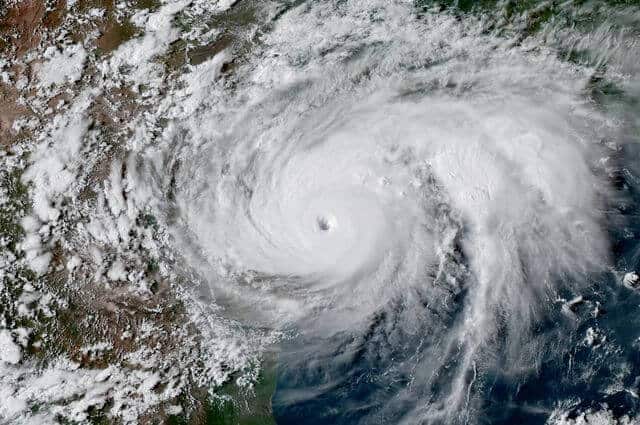Stories about the end of the world have long captured the imaginations of writers, filmmakers and other artists — as well as their audiences.
A new paper from UCLA researchers took a look at the history of such stories and compared them to the real, existential threats facing life on Earth and — spoiler alert — fiction and reality don’t line up and that gap could have dangerous consequences.
Some of civilization’s earliest stories contain doomsday tales. In the Epic of Gilgamesh, a poem from Mesopotamia written around 2,100 B.C., destruction came in the form of great floods. Christian tradition echoes these tales in the Bible, foreseeing Armageddon as “a final spiritual reckoning, or a battle between God and the armies of unrepentant sinners,” the paper noted.
In more modern narratives, people are frequently the cause of our own demise. “Technology run amok” is a particularly popular theme, according to authors Peter Kareiva, director of UCLA’s Institute of the Environment and Sustainability, and Valerie Carranza, who graduated from UCLA in 2016 and worked as a researcher in Kareiva’s lab.
Whether it is the artificially intelligent machines in “The Terminator” or the genetically engineered dinosaurs in “Jurassic Park,” the idea that something of our own creation could turn on us connects with audiences, earning the movies billions of dollars.
When it comes to stories of environmental catastrophe, human and corporate greed are often villains, as they are in films like “Erin Brockovich” and Dr. Seuss’s “The Lorax.” And as the planet continues to heat up, so have anxieties about climate change. This is reflected in Hollywood blockbusters such as “The Day after Tomorrow” and “Waterworld.”
But the UCLA researchers argue that there’s something missing from these popular stories: actual science.
“Notably, none of the environmental disaster films draw on any insights from environmental science or ecology,” they wrote in their paper, which was published in ScienceDirect.
“We need to change our narratives because for all the damage greed and human malfeasance might do, in the end ignorance may be our worst enemy — especially when it comes to climate shocks, which we have only just begun to understand,” Kareiva said.
Kareiva and Carranza said that even though economic systems and human greed can bring great harm, these threats can be mitigated by government action. On the other hand, ignorance of complex human-natural systems that include positive feedback loops — whereby small actions are amplified by natural processes — pose the greatest existential risk, they argue.
For example, the paper notes, as carbon dioxide is released into the atmosphere and the climate warms, the warming releases even more carbon dioxide from the ocean and land, compounding global warming. (For another example of a positive feedback loop, see UCLA professor Alex Hall’s video on the albedo effect.)
Climate change is the most likely existential threat to humans, according to Kareiva and Carranza. Research indicates greatly elevated atmospheric levels of carbon dioxide could reach a threshold point that triggers a series of events — changes in ocean circulation, massive sea level rise and increased extreme weather — that would lead to “apocalyptic outcomes for humanity.”
Carbon emissions and climate change threaten life in other ways, too. Carbon dioxide enters oceans and acidifies them, endangering coral reefs and other marine ecosystems. Climate change is also expected to reduce the amount and quality of available freshwater, which people need to survive. The resulting scarcity of necessary resources increases the likelihood of wars, conflict and social unrest, the researchers said.
Another potential threat is extinctions, but Kareiva and Carranza see this as unlikely. Loss of too many species could lead to reduced food sources, but not to the point of threatening human existence. Unless all or nearly all of the species on our planet were to go extinct — something no one in the scientific community has predicted, they said — people would survive. The losses would be “ethical and spiritual,” but not existential.
Yet another example is loss of ozone in the stratosphere, but actions such as the Montreal Protocol, which called for the phasing out of substances that deplete the ozone layer, appear to be making progress toward correcting the problem.
“Humans are remarkably ingenious, and have adapted to crises throughout their history,” the paper notes. But with climate change, there are additional challenges. In addition to positive feedback loops, there is a long delay between increased atmospheric carbon dioxide and its effects, leading to a lack of urgency in dealing with the problem of carbon emissions,” Kareiva said.
The paper concludes that while environmental doomsday stories focus on over-exploitation of nature and unintended consequences of technology, the real risk is our failure to fully understand what is happening — leading to insufficient responses to real threats like climate change.
Kareiva and Carranza further argue that the narratives people write about “the end of the world” risk misleading society, causing people to look in the wrong places for existential risks.
“People are more likely to connect and recall a film than a scientific article,” Carranza said. “If Hollywood starts producing top box office films about eco-catastrophes that have a solid scientific basis, we can communicate to a much larger audience — and that can really have a large impact.”
If our reporting has informed or inspired you, please consider making a donation. Every contribution, no matter the size, empowers us to continue delivering accurate, engaging, and trustworthy science and medical news. Independent journalism requires time, effort, and resources—your support ensures we can keep uncovering the stories that matter most to you.
Join us in making knowledge accessible and impactful. Thank you for standing with us!

